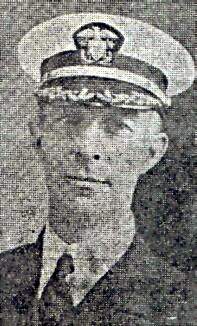|
Dec. 11th, 1929 Philadelphia:
The 10,000 ton cruiser, Salt Lake City, was placed in commission by Admiral Latimer, and then turned over to Captain Frederick L. Oliver.
|

|
|
Dec. 11th, 1929 Philadelphia:
The 10,000 ton cruiser, Salt Lake City, was placed in commission by Admiral Latimer, and then turned over to Captain Frederick L. Oliver.
|

|
|
Newspaper articles about The Launching of the U.S.S. SLC CA25 Article Index |
|
Salt Lake City Joins US Fleet
Cruiser is Commissioned Captain Frederick L. Oliver in Charge Salt Lake City Tribune, SLC, Utah, December 12th, 1929 Source of this article Roy Webb, Multimedia Archivist, Special Collections J. Willard Marriott Library, University of Utah, SLC, Utah |
|
Philadelphia, PA. Dec. 11, 1929
Uncle Sam today added a greyhound to his fleet of sea dogs when Salt Lake City, first of the
10,000-ton light cruisers authorized by congress in 1924, was placed in commission at
Philadelphia navy yard.
|
|
New Cruiser Begins Jaunt for Condition
Salt Lake City starts its "SHAKEDOWN" Tour to join Fleet |
|
Sleek and gray, the latest word in modern scout cruiser design, the USS SALT LAKE CITY,
commanded by Captain Frederick L. Oliver, was launched recently from the Philadelphia Navy
Yard on it first "Shakedown" cruise, a jaunt of 10,000 miles.
Between the two funnels, so placed as to give full sweep to their operations, are two
catapults, one on each side, for launching the four seaplanes which are a part of the SALT
LAKE CITY's equipment. The planes carry two men each, and are designed for fighting,
scouting and observation. The catapults are of secret design and closely guarded.
As auxiliary equipment, the SALT LAKE CITY carries a 35 foot gig for the Captain's use,
another 35 foot boat for officers, two 40 foot motor sailers and a 36 foot motor sailer for
the crew, two 30 foot whaleboats, a 26 foot motor whaleboat, and a punt.
|
| Article Index |
|
"Salt Lake City" Passes Speed Test on Atlantic
The SLC, under commander Captain F. L. Oliver, makes speed test at sea. By Sandor S. Klein |
|
The sleek 10,000 ton cruiser, Salt Lake City, newborn of the United States Navy and first ship of its class, "Showed Off" today for the naval board of inspection and survey, passing triumphantly every rigorous test for speed and power.
Then the cruiser set its course for New York at full speed. After about an hours sailing, to the surprise of the laud lubbers (two New York City newspaper reporters and this correspondent) aboard, the engines stopped suddenly, and then heaved a tremendous sigh. Before the landsmen could get over their amazement, the vessel started backing up at full speed.
A new craft, the nucleus of a 10,000 ton division now being constructed, the Salt Lake City moved majestically up the Hudson, while harbor craft, ranging from puffy little tugs to ocean liners, saluted it.
|
| Article Index |
|
Source of Pictures & Articles: SLC Memorabilia Collection
Article Index |
|
You are on Page 18 of SLC Memorabilia Articles
Go to Page 1 2 3 4 5 6 7 8 9 10 11 12 13 14 15 16 17 18 19 20 21 22 23 24 25 |
|
The address of this page is assoc_articles-18.htm
Send Questions, Comments or Report Problems to Website Curator, Sandy Eskew Return to SLC Main Index for Email Address ©Copyright |